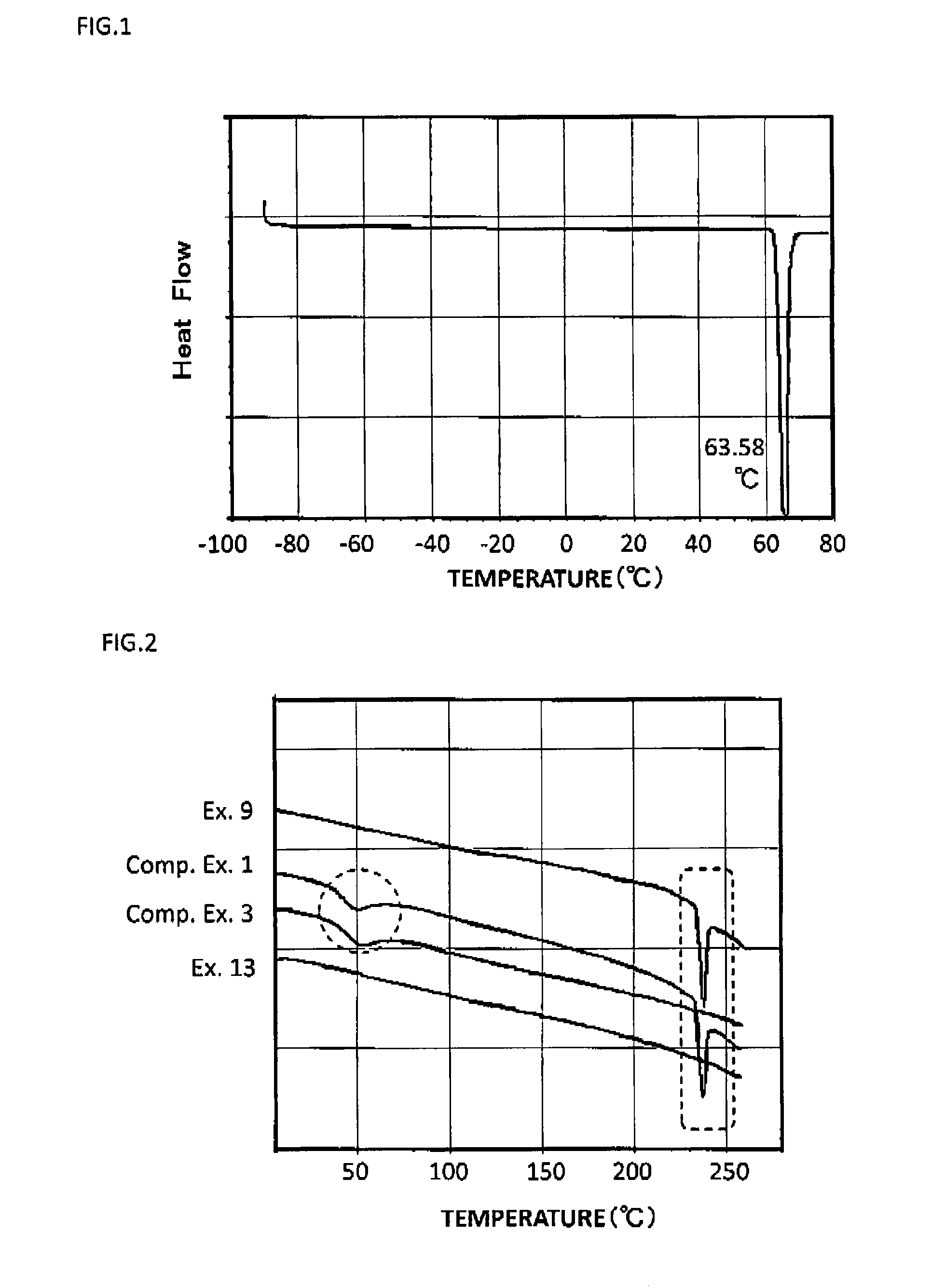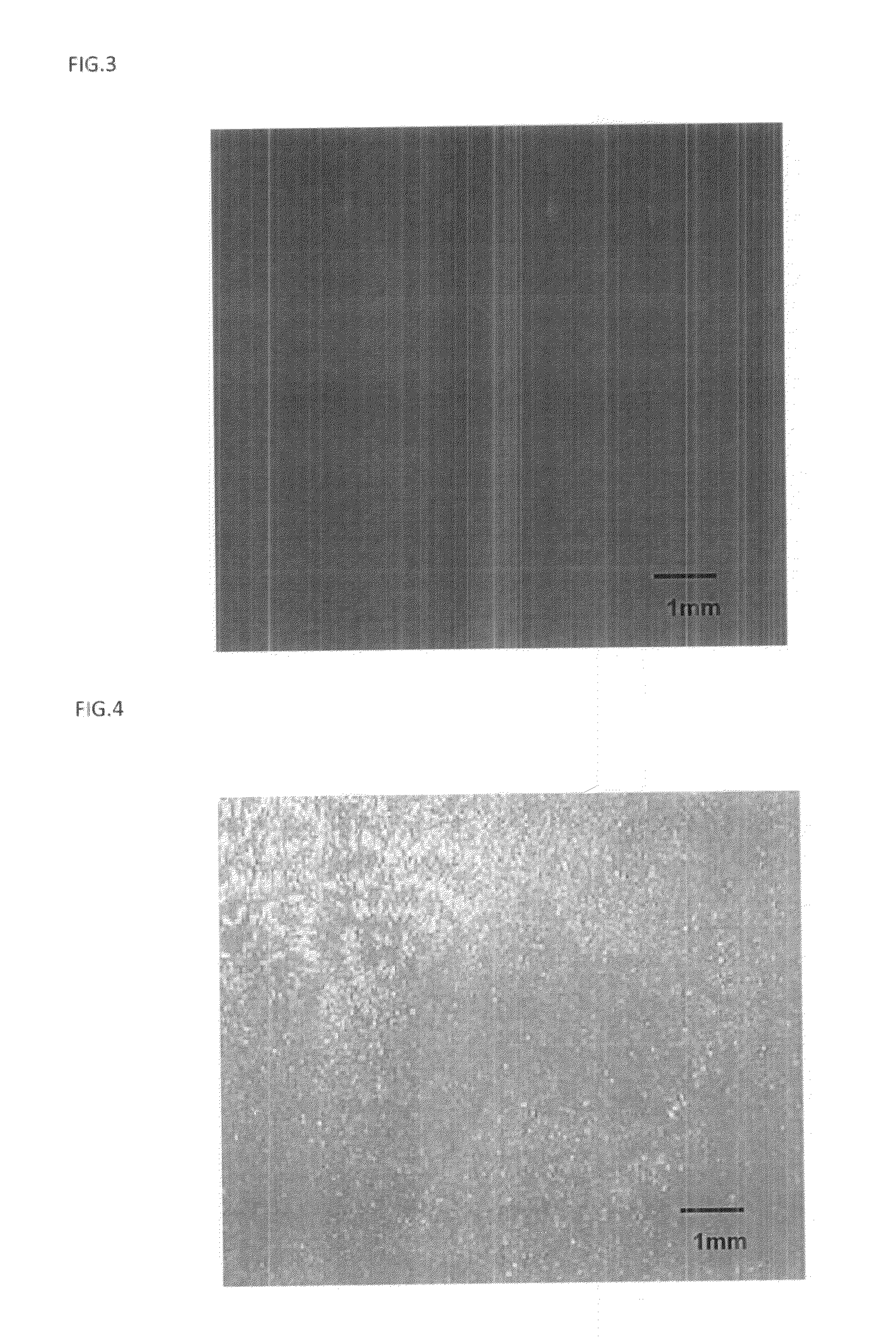Method for producing patch, patch and package
a technology of patch and package, applied in the direction of bandages, biocide, drug compositions, etc., can solve the problem of high level of long-term storage, achieve high levels of skin penetration and pharmaceutical physical properties, and achieve high levels of pharmaceutical physical properties. , the effect of high level of skin penetration
- Summary
- Abstract
- Description
- Claims
- Application Information
AI Technical Summary
Benefits of technology
Problems solved by technology
Method used
Image
Examples
example 1
[0155]First, by using a mixing apparatus, 15.0 parts by mass (13.2 parts by mass in terms of free ropinirole) of ropinirole hydrochloride, 1.6 parts by mass of sodium hydroxide (a desalting agent, 0.8 moles per mole of the ropinirole hydrochloride), 11.9 parts by mass of liquid paraffin, toluene (solvent), 11.4 parts by mass of a styrene-isoprene-styrene block copolymer (SIS) (SIS 5000, manufactured by JSR), 42.6 parts by mass of an alicyclic hydrocarbon resin, 4.5 parts by mass of polyisobutylene, 10.0 parts by mass of isopropyl palmitate, and 3.0 parts by mass of octyldodecanol were mixed together. Thus, 100 parts by mass (the total mass of the compounds excluding the solvent (toluene)) of the adhesive agent layer composition was prepared. The constitution (excluding toluene) of the adhesive agent layer composition is shown in Table 1. Note that, at the above-described mole ratio of the ropinirole hydrochloride and sodium hydroxide, 2.6 parts by mass, in terms of free ropinirole, ...
examples 2 to 12
[0158]Patches were obtained in the same manner as in Example 1, except that the heat treatment conditions were changed to those shown in Table 2. The patches immediately after production were subjected to the above-described Free crystal evaluation and Salt crystal evaluation. Each of the patches was evaluated as A in the Free crystal evaluation and as B in the Salt crystal evaluation. It was found that although crystals of ropinirole hydrochloride remained, free ropinirole was contained in the adhesive agent layer at a supersaturated concentration in a dissolved form. FIG. 2 shows a graph showing the result of DSC measurement conducted on the patch obtained in Example 9 immediately after production.
example 13
[0159]First, an adhesive agent layer composition was obtained in the same manner as in Example 1, except that the constitution shown in Table 1 was employed, in which the amount of sodium hydroxide added was 1.1 moles per mole of the ropinirole hydrochloride. Note that, at the above-described mole ratio between ropinirole hydrochloride and sodium hydroxide, ropinirole hydrochloride was not contained in the adhesive agent layer composition, and 13.2 parts by mass of free ropinirole was contained in the adhesive agent layer composition. In addition, the amount of free ropinirole here was an amount which resulted in a supersaturated concentration in the adhesive agent layer composition (excluding the solvent).
[0160]Subsequently, a patch was obtained in the same manner as in Example 1, except that the obtained adhesive agent layer composition was used, and the heat treatment conditions were changed to those shown in Table 2. The patch immediately after production was subjected to the ab...
PUM
| Property | Measurement | Unit |
|---|---|---|
| Temperature | aaaaa | aaaaa |
| Time | aaaaa | aaaaa |
| Percent by mass | aaaaa | aaaaa |
Abstract
Description
Claims
Application Information
 Login to View More
Login to View More - R&D
- Intellectual Property
- Life Sciences
- Materials
- Tech Scout
- Unparalleled Data Quality
- Higher Quality Content
- 60% Fewer Hallucinations
Browse by: Latest US Patents, China's latest patents, Technical Efficacy Thesaurus, Application Domain, Technology Topic, Popular Technical Reports.
© 2025 PatSnap. All rights reserved.Legal|Privacy policy|Modern Slavery Act Transparency Statement|Sitemap|About US| Contact US: help@patsnap.com


